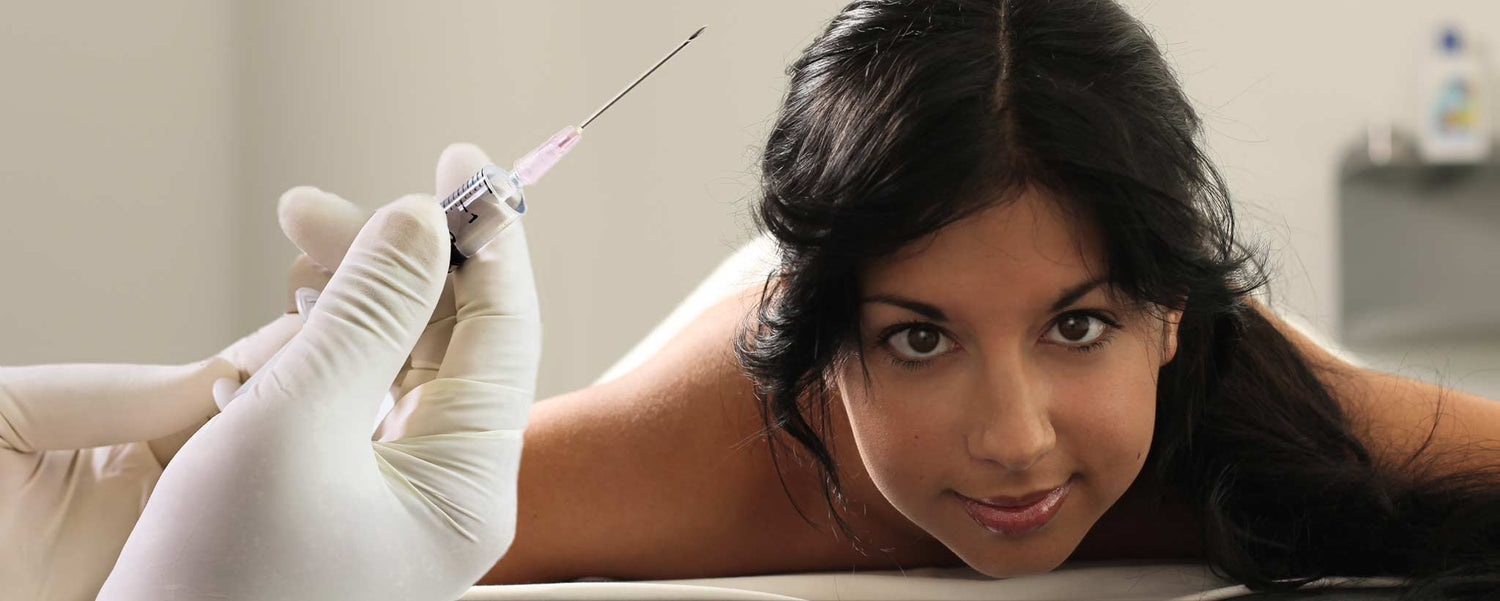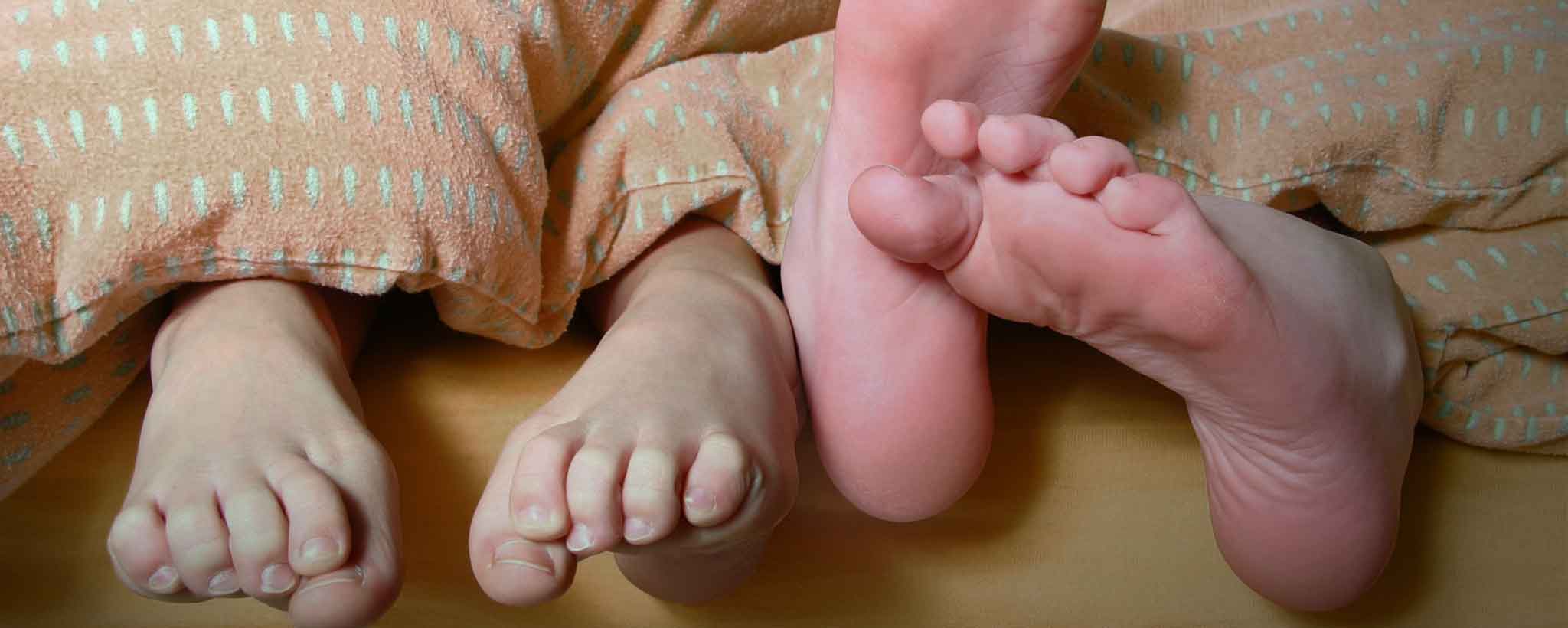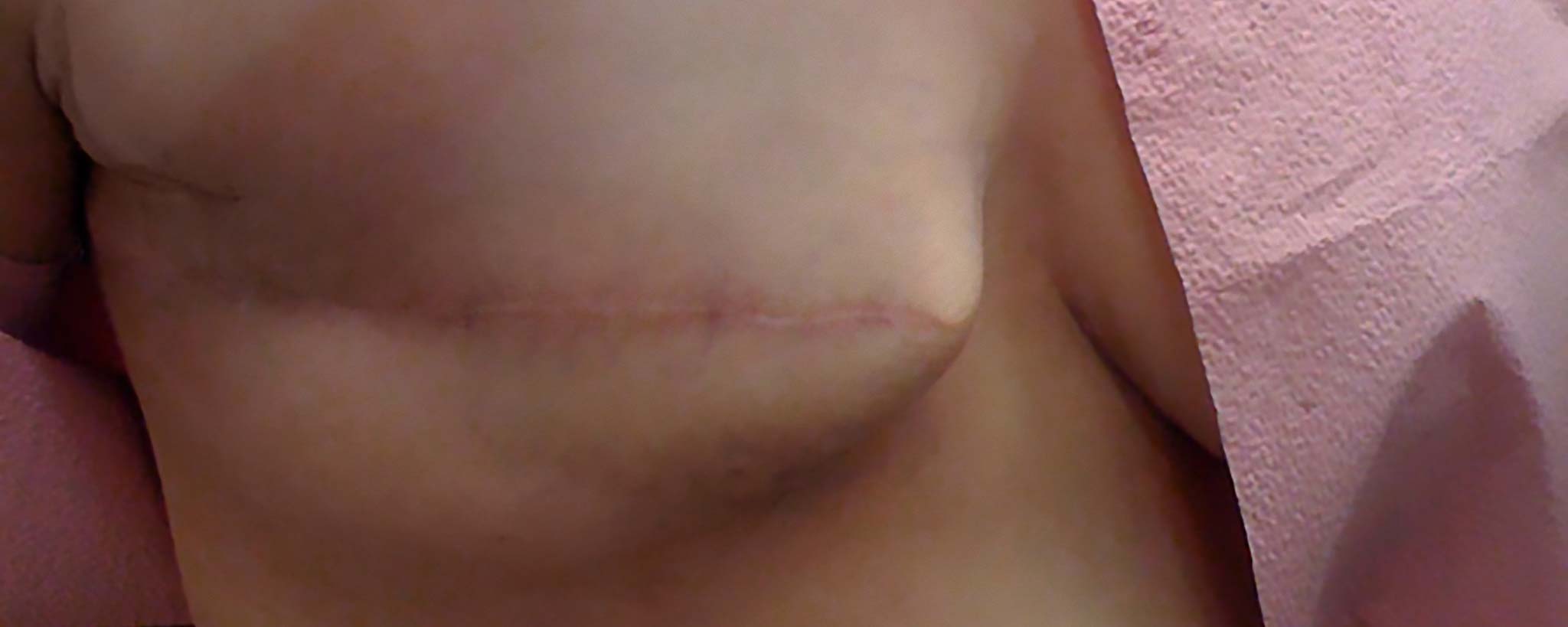Ancient medicine becomes cutting-edge treatment.
Ligament Regeneration
Chronic pain is debilitating. After trying conservative approaches, most patients part with thousands of dollars on treatments and apparatuses seeking relief. In this vulnerable state, it is not uncommon for people to exhaust all funds for marginal improvement.
The concept of regenerating ligaments goes back to ancient Egypt. Later Roman gladiators were poked with hot needles to stimulate healing. Under different names, Prolotherapy (proliferative therapy) has seen a modern-day resurgence since the early 1900s. In the 1930s Dr. George S. Hackett, a U.S. general surgeon, began performing injections of irritant solutions to repair joints and hernias.
In 1955, Gustav Anders met Hackett and was impressed enough to begin practicing Prolotherapy. For nearly 90 years, techniques have been refined.
What is Prolotherapy?
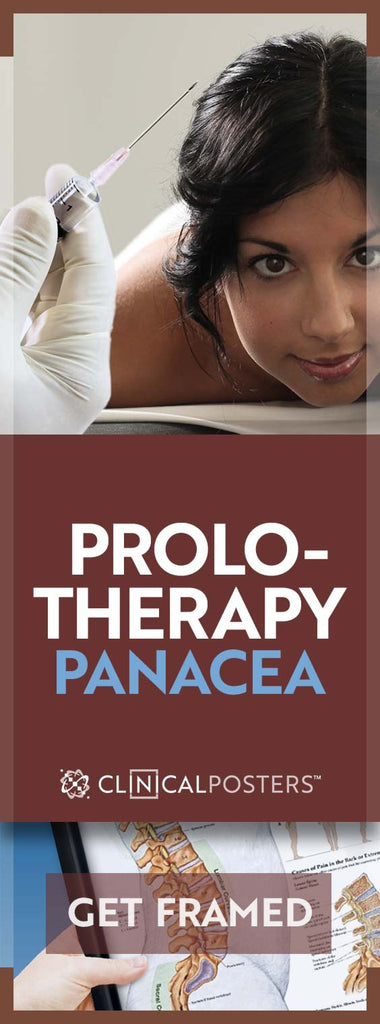
Prolotherapy is not pain management. It is pain rehabilitation, administered by osteopaths and occasionally specialists in orthopedics, neurology, or other disciplines.
The target areas can be within the back, hips, shoulders, knees, ankles, elbows, wrists, neck, or jaw. Difficult-to-palpate areas like connective tissue within the sacroiliac joint region are also addressed. Some claim it is a cure for arthritis, sciatica, and disc herniation.
Prolotherapy takes place in a doctor’s office. The treatment area is sterilized and anesthetized. Depending upon the location, a patient may also receive a mild sedative.
The injection-based orthopedic treatment is directed into tendons and ligaments with an irritant to stimulate regeneration of tissue. The non-biologic irritant is typically medical-grade diluted dextrose, a purified cod-liver oil derivative, saline, vitamin B12 (methylcobalamine), sarapin, and procaine or lidocaine.
Some practitioners offer biologic alternatives with platelet-rich plasma and stem cell injections. Though the latter procedures are injected with the same goal, they are not Prolotherapy.
Similar to other non-biologics, dextrose (sugar water), when taken by mouth, is considered a placebo in clinical trials. When injected directly into the musculoskeletal system, it becomes an irritant.
Tendons that have become lax and unsupportive can undergo cellular repair and regeneration. The course of weekly treatments can last up to 6 weeks with complete resolution.
Prolotherapy complements, but differs from, trigger point therapy and Chinese acupuncture. Physical therapy uses trigger point muscle manipulation. Acupuncture involves the superficial insertion of needles into the skin based on dermatomes, or deep into muscular or nervous tissue or onto bone as a sensory stimulation.
Dry needling is a Western medicine approach to trigger point therapy. Radiofrequency ablation is a long-lasting injection therapy that regenerates nerves to reduce pain for 6 to 12 months. Prolotherapy is focused on ligaments and tendons, but referred pain can cause muscle fragility that benefits from trigger point therapy. Despite broader acceptance of other needle therapies, Prolotherapy does not share the spotlight.
Results-Based Medicine
The desperation of chronic pain sufferers leads them to accept marginal odds for improvement. This may include clinical trials with undetermined results. Back surgeons typically offer only a 50 to 57 percent chance of improvement. It is natural for patients to favor the best odds; this is only possible when the odds of each treatment are disclosed. Prolotherapy boasts 90 percent success rate.
Prolotherapy boasts a 90 percent success rate.
Unless there is major trauma, no one wants to jump directly into surgery. Non-invasive procedures are first offered. So physical therapists pull and stretch while the patient takes NSAIDs. Next, patients marinate in various prescription drugs that attempt to disrupt the nervous system.
When pain persists more than 6 weeks, patients might hear names of more ominous procedures like epidurals, nerve blocks, discectomy, cervical corpectomy, spinal laminectomy, and spinal fusion.
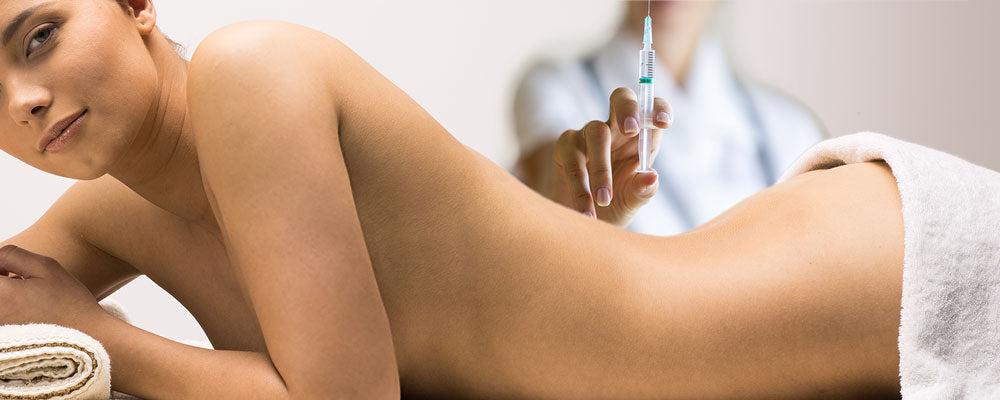
Prolo-Controversy
It seems a non-surgical procedure that has been around for decades, with a 90 percent success rate, should be a top recommendation to cope with chronic pain. It even meets hospital goals of reducing opioid dependency. Yet, many readers of this article are finding out about it for the first time. Most insurance companies won’t even pay for it. (Kaiser Permanente currently supports non-biologic Prolotherapy.) Millions of success stories are virtually disregarded. To be fair, there are many contrary experiences.
The lack of large-scale double-blind studies has relegated Prolotherapy to an obscure alternative or non-evidence-based medicine. Insurers are waiting for a drug company to fund clinical trials with hundreds of chronic pain sufferers. Give half a placebo and half a regenerative stimulant. See if the patients can tell the difference and monitor them for years afterwards. This trial is unlikely because pharmaceutical companies do not profit from the procedure.
It seems a non-surgical procedure around for decades with a 90 percent success rate should be a top recommendation.
It is reasonable to think that if you are experiencing excruciating pain, you can tell pretty quickly whether a treatment is working or not. Some argue the placebo effect. This is when a person has a positive or negative response to a placebo, where the result should be neutral. A theory is that when people first visit a doctor or begin a clinical trial, their symptoms are very bad. Over the natural course of an illness, symptoms may get better on their own while taking a placebo (or any ineffective treatment).
Doctor Skeptic wrote an article in July 2012 entitled “Prolotherapy: the illusion of effectiveness.” He points to the absence of substantive clinical trials and bemoans the notion of comparing Prolotherapy with corticosteroid injections. He does not admit to being a Prolotherapist, nor does he have any first-hand experience.
His bold condemnation rallied many patients to defend the medical treatment. Others chimed in to agree with his suspicions of dubiousness. There are almost 80 responses. As a result of a perceived lack of evidence, Prolotherapy must stand on the recommendation of experienced doctors and patient testimonials.
Now imagine you are an orthopedic surgeon who earns a living performing back surgeries. What is your reaction when a patient asks about a Prolotherapy option? Might objectivity be compromised when a 5-minute dextrose or saline procedure threatens your livelihood? There is no shortage of doctors who flatly oppose Prolotherapy on concept alone. It is not an area in which they have been trained, so they are naturally skeptical.
Questions For Your Prolotherapist
Things you might want to ask before agreeing to the procedure:
- Is the doctor trained by The American Osteopathic Association of Prolotherapy Regenerative Medicine, another authorized group, or authorized physician?
- What is in the solution or stimulant?
- How many site injections per session are anticipated?
- How many treatments are necessary for this injury?
- What is your personal success rate?
- How many procedures have you performed?
- Can you provide patient testimonies or referrals?
- What are the possible side effects?
- How do I cope with any pain caused by the procedure?
- What physical restrictions are imposed during the treatment period?
- How much will it cost me?
- Is a different treatment (kyphoplasty, epidural, or radiofrequency ablation) indicated for my condition?
When Prolotherapy Doesn’t Work
Suppose 900,000 out of a million patients are ecstatic about the results. That leaves 100,000 unsatisfied. What goes wrong? Ross A. Houser, M.D. of Caring Medical has been a Prolotherapist since 1993. He answers the question, “Why didn’t Prolotherapy work for me?” on YouTube. You can begin with the qualifications of the person performing the procedure. Was the proper irritant used? Were enough injections administered? Is the patient counteracting treatment through overexertion?
Too much sitting can exacerbate lower back, sacroiliac, and coccyx pain. Since Prolotherapy intentionally irritates or inflames connective tissue, taking anti-inflammatory drugs reduces treatment effectiveness. Suppressed personal stresses can affect the nervous system. Does the patient have an autoimmune disorder? Dr. Houser goes on to describe how almost all these obstacles can be overcome. Of course, these are the words of someone who makes money from the procedure.
Is There Light at the End of the Needle?
Prolotherapy seems to be more geared toward fine-tuning movement rather than correcting serious back problems. It is not a cure for arthritis, disc herniation, or nerve damage. Get an accurate diagnosis before paying a premium for someone to poke around your back.
Unless you are squeamish about needles, you may wish to view one of several videos of the procedure before racing to the first doctor with a saline-filled syringe. To the nurse who spent countless hours perfecting the art of finding a vein, Prolotherapy might seem reckless.
Prolotherapy seems to be more geared toward fine-tuning movement rather than correcting serious back problems.
It has been my goal to share the good, bad, and ugly side of Prolotherapy. It is more uncomfortable than a relaxing afternoon at a spa, but it offers potential for more long-lasting results. Now it is up to you to decide. Is it a panacea or an overlooked viable medical procedure? While making no endorsements, hopefully, this article will jumpstart your personal research. As always, direct health questions to a qualified medical professional.
To support the writing of useful articles about physiotherapy, ClinicalPosters sells human anatomy charts, scientific posters, and other products online. You may sponsor specific articles, become a ClinicalNovellas Member, or remit a small donation.
ClinicalPosters sells human anatomy charts, scientific posters, and other products online to offset expense of the writing useful articles about physiotherapy. Slide extra posters into DeuPair Frames without removing from the wall.
Show your support by donating, shopping for ClinicalPins, becoming a ClinicalNovellas Member, or leaving an encouraging comment to keep the research going.
To support the writing of useful articles about physiotherapy, ClinicalPosters sells human anatomy charts, scientific posters, and other products online. You may sponsor specific articles or remit a small donation.
ClinicalPosters sells human anatomy charts, scientific posters, and other products online to offset expense of the writing useful articles about physiotherapy. Slide extra posters into DeuPair Frames without removing from the wall.
ClinicalPosters sells human anatomy charts, scientific posters, and other products online. You may remit a small donation or become a ClinicalNovellas Member.
You can support the writing of useful articles about physiotherapy by sponsoring specific articles, becoming a ClinicalNovellas Member, or remitting a small donation. Visible content is optimized for device size.
UPDATED 2025 – This article reflects editorial revisions since its original publication.
FAQ: Why people gravitate to prolotherapy
What is prolotherapy?
The injection-based orthopedic treatment is directed into tendons and ligaments with an irritant to stimulate regeneration of tissue. The non-biologic irritant is typically medical-grade diluted dextrose, a purified cod-liver oil derivative, saline, vitamin B12, sarapin, and procaine or lidocaine.
How old is the prolotherapy concept?
This concept of regenerating ligaments goes back to ancient Egypt. Later Roman gladiators were poked with hot needles to stimulate healing. Under different names, prolotherapy has seen a modern-day resurgence since the early 1900s. For over a hundred years, techniques have been refined.
Is prolotherapy beneficial?
Unless there is major trauma, no one wants to jump directly into surgery. Non-invasive procedures are first offered. It boasts a 90% success rate.
Why might prolotherapy be ineffective?
Suppose 900,000 out of a million patients are ecstatic about the results. That leaves 100,000 unsatisfied. Too much sitting can exacerbate lower back, sacroiliac, and coccyx pain.


